One of the scariest worries that drivers have is pressing the brakes and nothing happening. The most important component of your braking system and the key to stopping your automobile are your brake pads.
Your automobile can have problems stopping if your brake pads get overly worn. At the very least, stopping farther away might be necessary, which is risky.
How much should you prepare to spend when it comes time to replace your brake pads? We’ll cover everything you need to know about replacing brake pads, from the cost to how to do it yourself.
What Is a Brake Pad and How Does It Work?
Let’s talk about your braking system in general and how the pads fit in before we get into the specifics of brake pad replacement. The entire system is made up of more parts than only brake pads.
Since earlier automobiles’ braking drums contain brake shoes rather than brake pads, we shall solely examine disc brake systems. First, each wheel on your car is equipped with braking rotors. Because the wheel and rotor are coupled, when your wheels turn, so do the rotors.
Brake calipers are resting on these rotors. The caliper has one side on each side of the rotor and has a form like the letter “C.”
They are seated quite near the rotors but do not touch them. The brake pads are located inside the calipers. Your automobile slows down and stops when the brake pads make contact with the rotor.
The hydraulic brake fluid is pumped into the calipers when you step on the brake pedal. When this occurs, the brake pads are forced against the rotors by hydraulic pressure applied by the calipers.
The wheels of your automobile will slow down and finally come to a stop when the pads tighten their grip on the rotors. The brake pads will clamp against the rotors more forcefully the harder you push the brake pedal.
Several different materials may be used to make brake pads. The most popular kinds are ceramic brake pads, semi-metallic brake pads, and organic materials (non-metallic brake pads).
Each class has advantages and disadvantages, and which one you use will depend on the application. An everyday driver needs different brake pads than a sports car does.
Brake Pad Replacement: What Is It?
The worn components on automobiles with disc brakes that need to be replaced over time to guarantee safe braking are the rotors and pads.
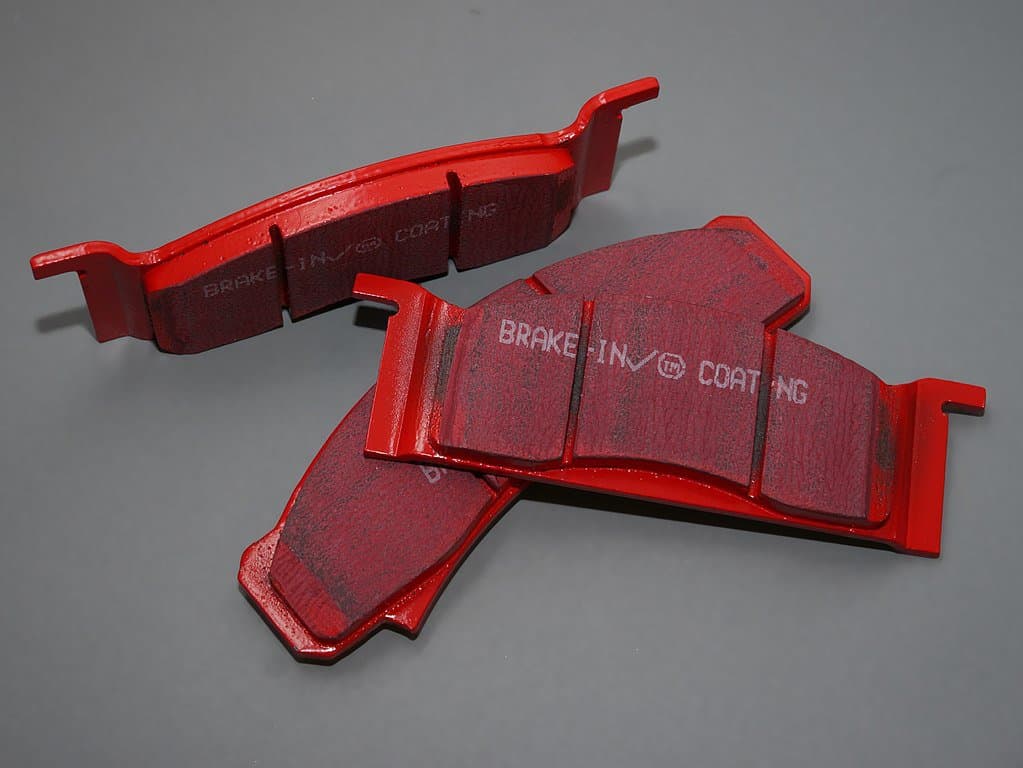
A set of pads for high-performance disk brakes by Treemonster86 / CC BY-SA 3.0
When you press the brake pedal, the brake calipers are compressed by fluid in the master cylinder, which forces the brake pads against the brake rotors. Your automobile comes to a stop due to this friction.
The material used to make the brake pads and rotors deteriorate with time. The price to replace brake pads and rotors varies depending on the vehicle and the material the pads and rotors were made of.
Remember that these parts prices are for a four-wheel braking operation that includes replacing all pads and rotors. To work on just the front or rear brakes, pads come in groups of four, and rotors are offered separately.
How Much Does Brake Pad Replacement Cost?
So how much should new brake pads and rotors cost? The cost of brake servicing varies depending on many variables, but the typical cost of replacing brake pads is roughly $300 per axle.
Brake pad and rotor replacement expenses typically total roughly $650 per axle if the rotors need to be replaced at the same time. The prices of organic and semi-metallic pads are not too high.
In most circumstances, a pair of brake pads may be obtained for around $100. Keep in mind that a set may only be used on the front or the rear, not both. Usually, the cost of front and rear brake pads is comparable.
You may spend $200 to $250 on the pads alone if your automobile needs ceramic brake pads or if you elect to get enhanced aftermarket brake parts.
Because high-end automobiles require significantly more expensive components, the brand, and model of your car have a significant impact on the cost of the repair. For example, brake pads for a Honda Civic may cost $50, whereas brake pads for a Mercedes-AMG could cost $250.
The labor expenses range from $80 to $200 for a normal brake job that takes a competent technician around an hour to perform for the pads alone. Rotor replacement will almost certainly increase the time needed.
Although it can not be enjoyable to spend money on brake replacement or repair, brake maintenance is unquestionably something you do not want to neglect!
What Is the Cost of Replacing All Four Brake Pads?
For all four wheels, it costs between $250 and $700 to replace all four brake pads, components included. These materials come in a variety of grades, from cheap to expensive.
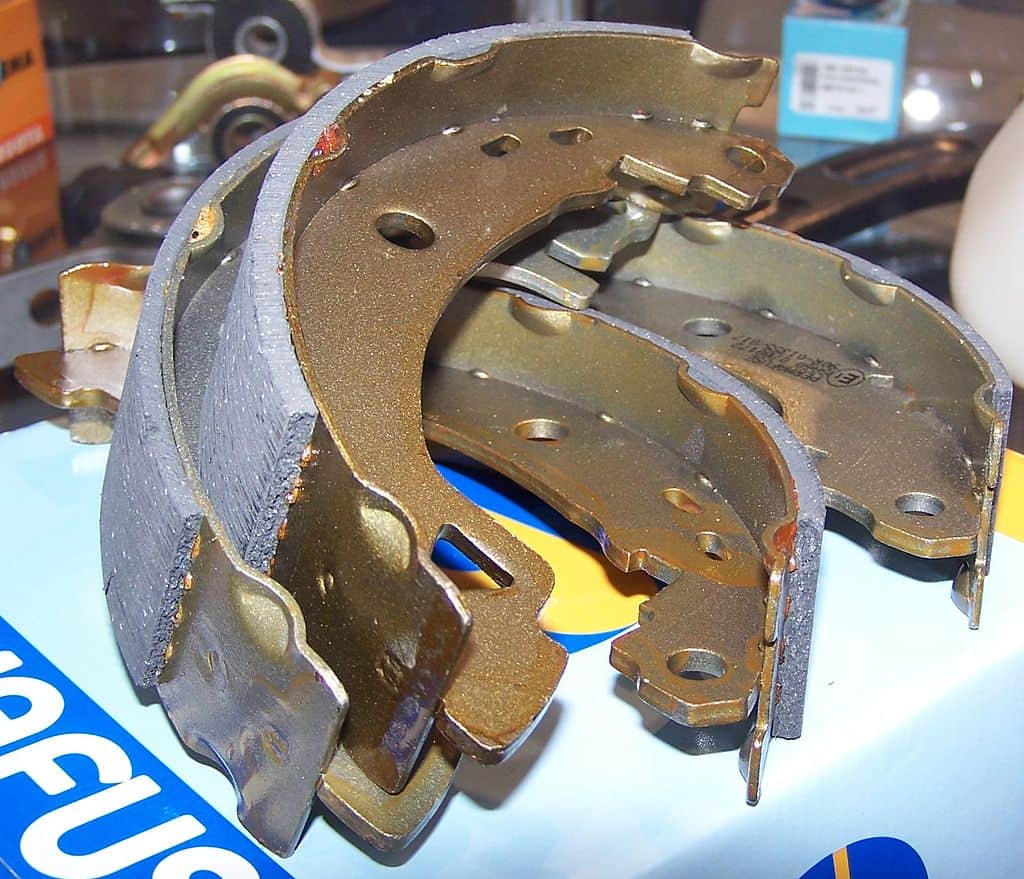
Drum shoes with brake pad linings by Maly LOLek / CC BY-SA 3.0
Cost of Front Brake Pad Replacement
About 70% of the time, your car’s braking is performed by the front brakes. These brake pads frequently overheat, which can cause squeaking, groaning, or grinding.
The cost of replacing a front brake pad ranges from $120 to $350 on average, which is comparable to the price of replacing a rear brake pad. These materials come in a variety of grades, from cheap to expensive.
Cost of Rear Brake Pad Replacement
The car’s rear brakes do aid in stopping, but they only provide roughly 30 to 40 percent of the braking. They should thus last longer, right?
Because the rear brake pads are smaller than the front ones, they will degrade at a similar pace. If your rear brake pads wear out, you may anticipate that your front brake pads will follow soon after.
The cost of replacing a rear brake pad ranges from $120 to $350 on average, which is comparable to the price of replacing a front brake pad. These materials come in a variety of grades, from cheap to expensive.
What Factors Influence Your Brake Pad Replacement Cost?
The Driving Patterns: Brake pads may wear out more quickly if you brake often and stop suddenly.
The Environment Under Which You Drive: Your brake pads may be impacted by stop-and-go traffic and mountainous terrain where you must control greater downward speeds.
Materials Applied in the Production of Brake Pads: Varied materials are used to make brake pads, and each one has a different impact on durability.
Condition of the Brake Calipers and Rotors: Your brake pads are made to perform in harmony with calipers and rotors, among other brake parts. These might impact your brake pads if they aren’t in good shape.
What Takes Place If You Don’t Change Your Worn Out Brake Rotors and Pads?
Although brake pads and rotors are intended to wear over time, in the worst-case situation, continuing to drive on damaged brake parts can be extremely dangerous.
This is because there will be an increased distance of movement when you apply brakes. It can cause fatal accidents in cases where emergency braking is supposed to be applied.
Waiting too long to replace brake pads and rotors can increase the expense of the brake job and increase the risk of damage or excessive wear to other braking system components.
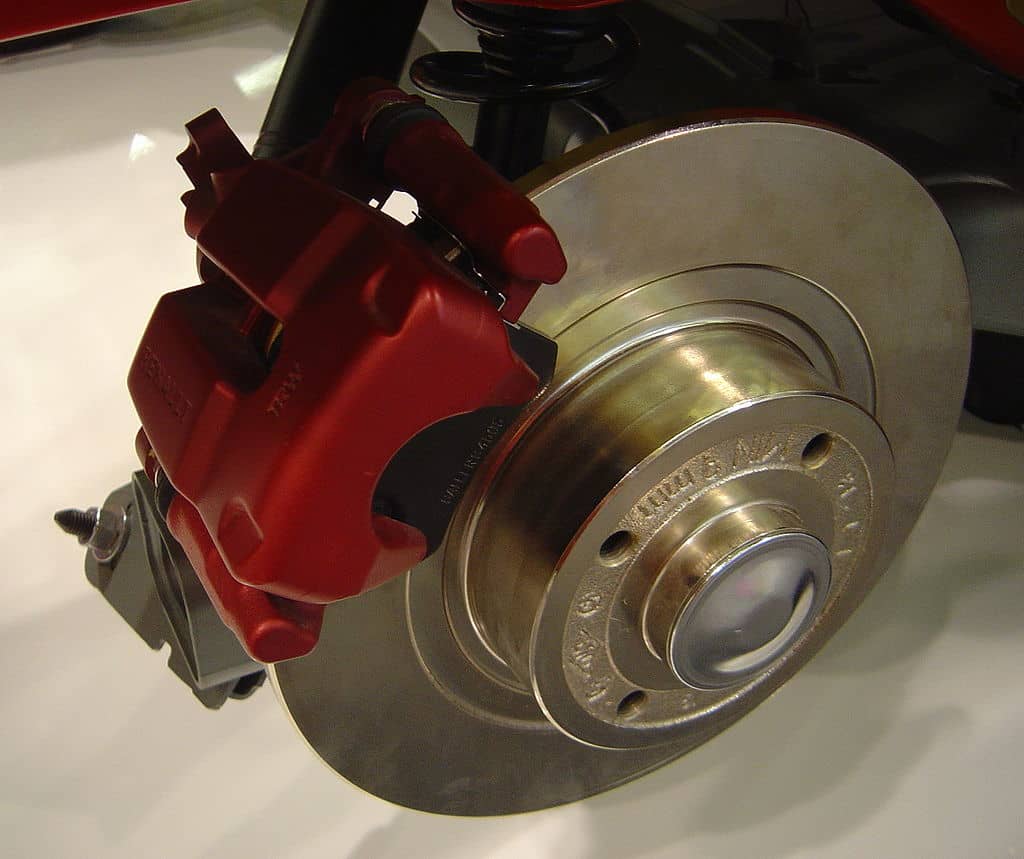
Automobile disc brake by David.Monniaux / CC BY-SA 3.0
What are the Symptoms of Worn Out Brake Pads?
How do you determine when to replace your brake pads, then? Your automobile will tell you if you just listen and pay attention! It will exhibit recognizable symptoms that will alert you that it is probably time to change the brake pads.
Noise That Is Squealing or Creeping
The majority of brake pads include wearing indicators that let you know when it’s time to replace them. As the brake pad wears down, this indication, which is a stiff metal strip, will start to scrape against the braking rotor.
The metal strip will scrape against the rotor and start to scream or squeak once the brake pad is too worn. You should examine your brake pads when you hear this noise since they could need to be replaced.
Even inside some contemporary automobiles are electronic indicators. When the pad is sufficiently worn, the indicator’s circuit breaks, causing a warning light to come on in your dash.
A Longer Stopping Distance
This is an obvious indication that a car’s brakes need to be serviced. You should take your automobile to a repair if it starts to take more distance for your car to come to a complete stop.
This most likely indicates that your brake pads are beginning to wear down and are no longer able to stop your car as forcefully as they once could. Make sure to get your car checked out right away because this symptom could indicate other problems, such as a leaking master cylinder.
A Grinding Sound
If you hear grinding when you apply the brakes, you could have put off getting your brakes serviced long enough. This most likely indicates that the metal backing plate on your pads has entirely worn out.
Now when the metal rotor and supporting plate are grinding against one other, serious damage might result! Your rotors will be harmed, and your braking fluid may overheat and possibly catch fire as a result.
Avoid driving with your automobile in that state and don’t ignore any grinding noises coming from your brakes.
The Brake Pedal Pulses
You can experience pulsating while applying the brakes, especially when stopping while traveling downhill. While this frequently indicates warped brake rotors, it is likely also time to check your pads.
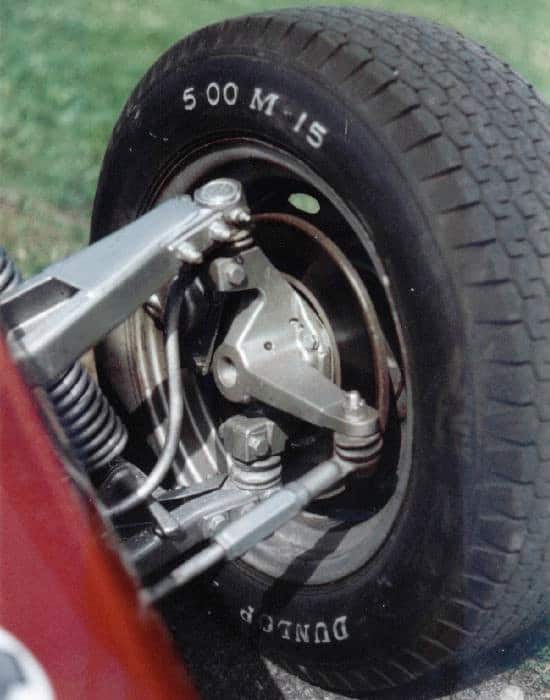
When the rotors get deformed and require replacement, it’s typically because the brake pads are producing too much heat. To identify the issue’s root cause and fix it, go ahead and have a mechanic examine your car.
How Often Should You Replace Your Brake Pads and Rotors?
How long do brake pads last and how frequently should they be replaced? The average automobile needs new brake pads every 40,000 to 60,000 miles. Naturally, this depends on the brand and type of your car as well as your driving style.
Your brake pads won’t last as long as those on a car that usually travels on highways if you commute every day and stop frequently in traffic.
Additionally, the brake pads on your car can contain softer friction material that has to be replaced every 20,000 miles. On the other hand, a set of pads can last you 75,000. Since no one solution applies to everyone, it relies on your particular circumstances.
Because you should change your brake pads as needed and not only after a certain number of miles, your owner’s handbook will often not provide a suggested frequency.
Brake Pad Replacement: A DIY Approach
You could choose to update your brake pads to save money because your car’s brake pads only account for a small portion of the replacement cost. If you have a little mechanical knowledge, changing your vehicle’s brake pads is not too difficult.
Many shade tree mechanics do this do-it-yourself project regularly. Continue reading if you have any questions about how to replace brake pads.
You should first take out your wheel. The majority choose to focus on one wheel at a time. The caliper should then be unbolted and removed.
To aid release the caliper, you might need to insert a screwdriver between the old pads and the rotor. When removing the caliper, take care not to harm your brake lines!
You may proceed to pop the old pads out of the caliper once the caliper has been removed. Once those are gone, you’ll need to force the piston back into the caliper using a clamp or something similar.
You won’t be able to wrap the new brake pads back around the rotor if you neglect this step. Put the new hardware and pads into the caliper once the piston has been depressed, then reinstall the caliper around the rotor.
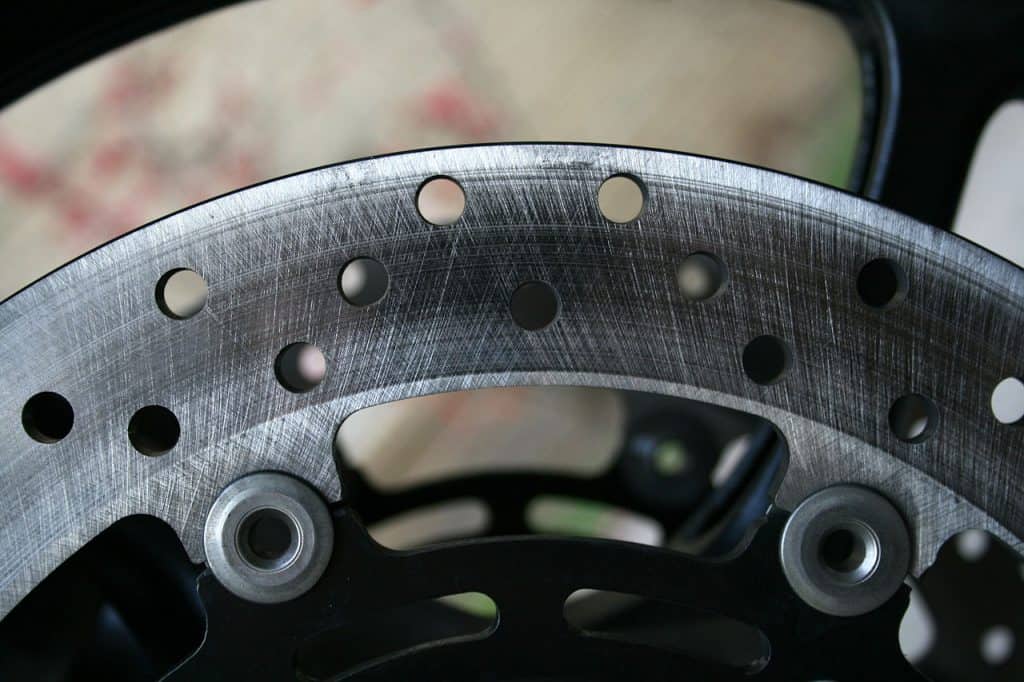
Drilled motorcycle brake disc by Ildar Sagdejev (Specious) / CC BY-SA 4.0
At the opposite wheel on this axle, repeat this process. Once finished, turn on your car and gradually depress the brake pedal. Most likely, it will practically touch the ground. Release the pedal gradually, then slowly depress it once more.
As the pistons move back against the pads after a few pushes of the pedal, it should feel normal once again. You are finished once you have driven your automobile and made a few abrupt stops to seat the brake pads.
Is It Okay to Merely Change the Brake Pads?
Yes, you might just need to replace your rotors once you change your pads. If you want to know if you need to replace your rotors, you should measure the thickness of your rotors and check for corrosion.
If not, you can change the brake pads and carry on driving. You should seek advice from your dealership or repair facility if you are unsure.
When conducting this task on a vehicle with a rebuilt title, be careful to verify all of the braking parts to ensure everything seems to be in order.
How Do Brakes and Brake Pads Differ from One Another?
Many individuals enquire as to whether brake pads and brakes are the same. It is easier to maintain regular car maintenance and upkeep if you are aware of the differences between braking systems and how they operate.
Brakes are different from brake pads. When you press the brake pedal, your automobile will come to a complete stop thanks to the coordinated action of many different parts known as the brakes.
Small, flat slabs that are a quarter of an inch thick and a few inches long are brake pads. The automobile slows down as a result of the friction and resistance created when the brakes are applied by the driver.
The brake pads’ surface will entirely deteriorate after many miles of use.
Difference Between Brake Pads and Rotors
The metal disc affixed to the axle directly behind the wheel is known as the rotor. Both the wheel and the rotor revolve in unison. The brake rotors on your car are what your brake pads grip to keep the wheels from spinning.
As was previously established, when a driver applies the brakes, the pads are forced against the rotor, which causes friction to slow the vehicle.
Drivers will require a brake pad and brake rotor replacement service since brake rotors and brake pads eventually wear out.
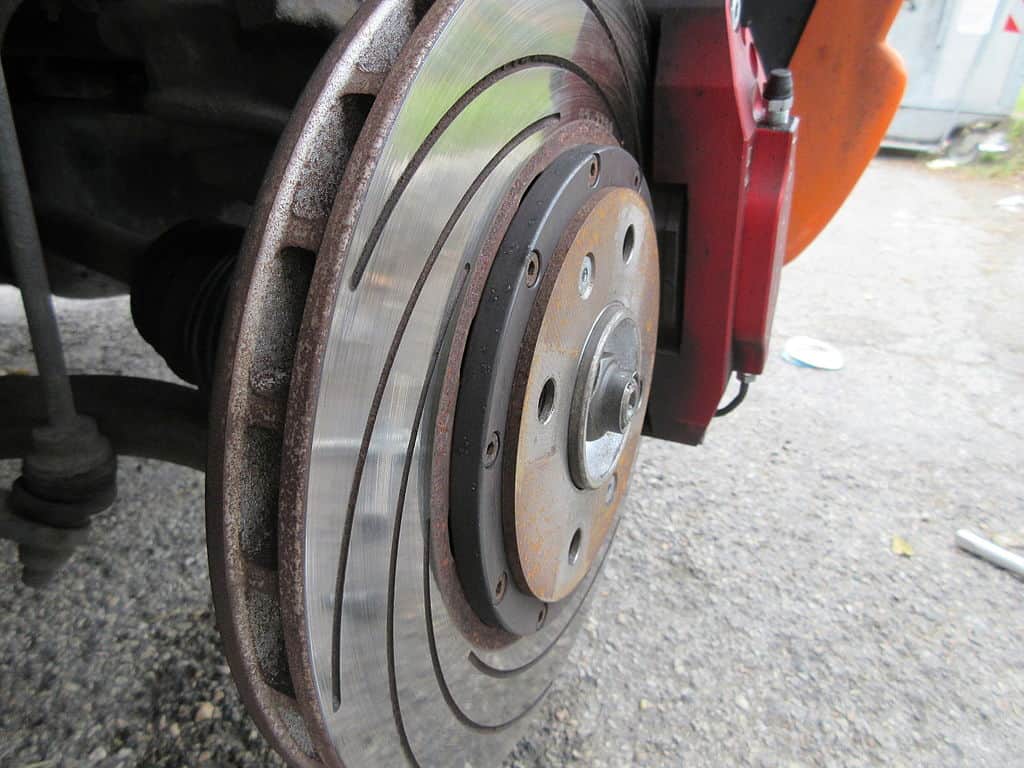
The Conclusion
Brake pad replacement is not a difficult or expensive task. You may save a lot of money by doing this yourself because brake pads only cost approximately $60 for the majority of autos.
Even if you take your car to the dealer, the repair should only cost you roughly $350 unless your automobile is really expensive.
Make careful to treat the situation as soon as you become aware of any worn-pad signs. Driving on can cause more harm and is exceedingly risky!
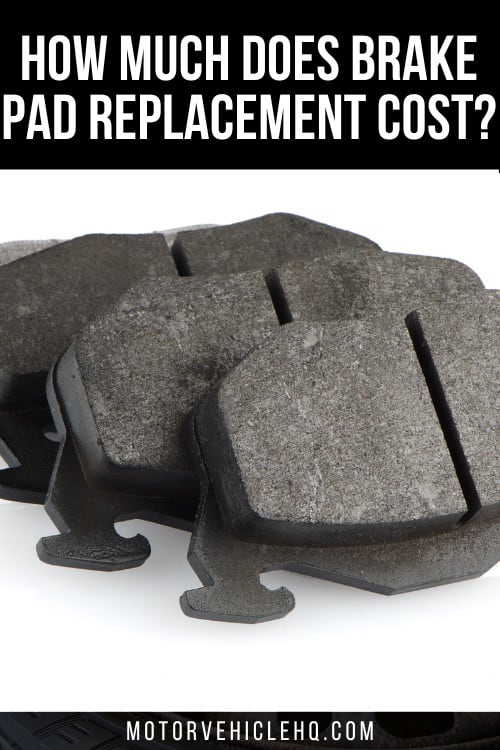
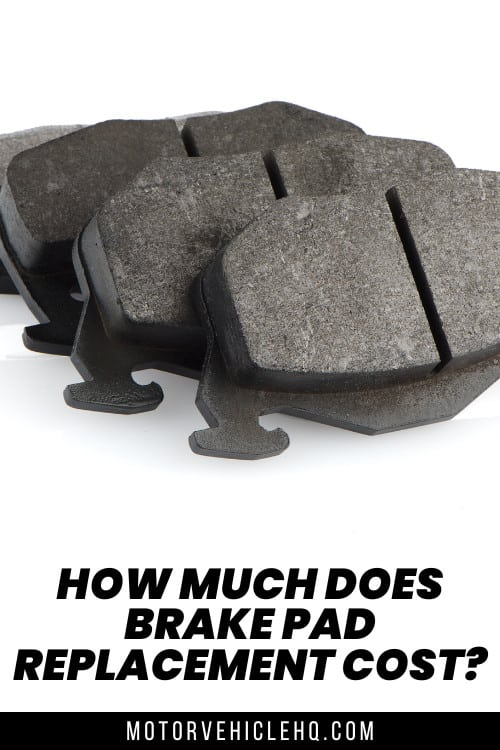

Nyangano Maurice specializes in vehicle troubleshooting and has more than 10 years of experience in the automobile industry. Over many years of experience as a car mechanic, he has acquired a broad range of skills, including engine repair, brake systems, electrical systems, and more. He frequently hosts community workshops and training programs to help motor vehicle owners understand their vehicles better.